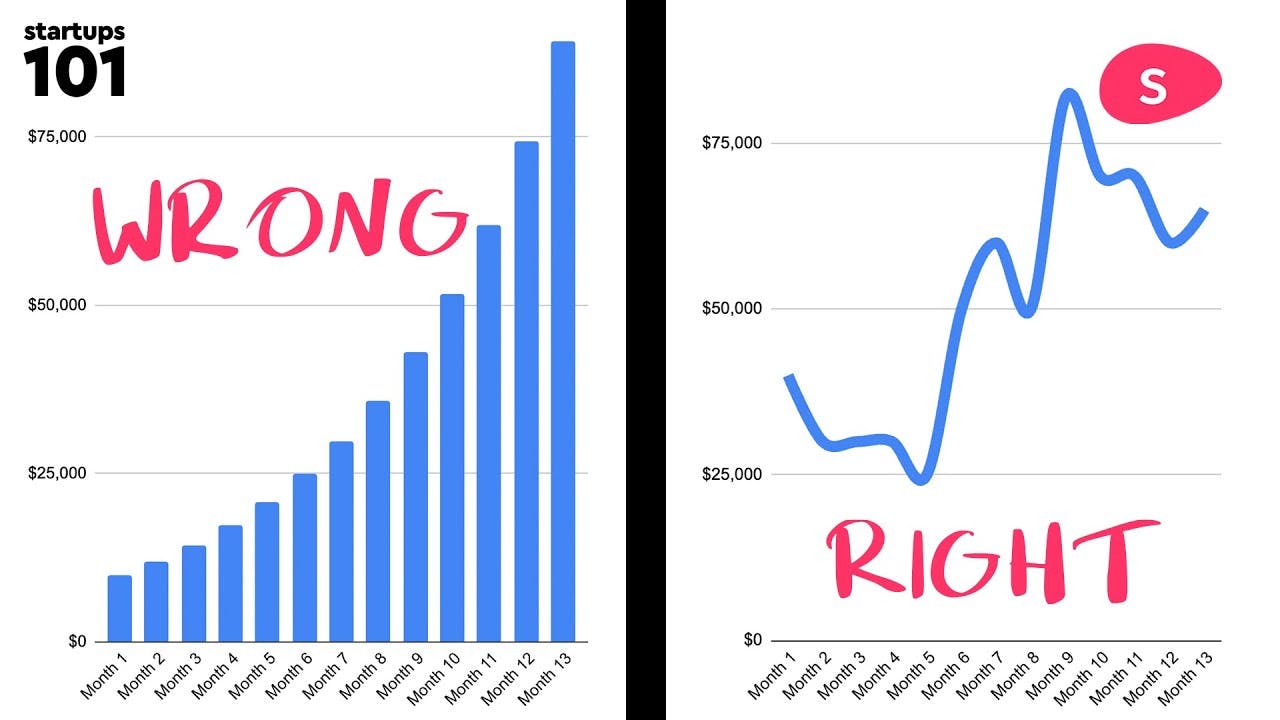Financial Modeling for Startups: Explained - Startups 101
()

Intro (00:00:00)
- A financial model is more than a spreadsheet; it's a tool for inputting data and generating critical business insights.
- It answers vital questions like how much runway a company has, how much to raise from investors, and company valuation.
- It's important for startups not to just input revenue goals but to understand revenue as an effect of various business activities, using driver-based modeling.
- Founders must avoid making overly simplistic or unfounded assumptions in their financial models.
Canvas (00:02:24)
- Financial models begin on a canvas rather than a spreadsheet.
- The color-coded system helps differentiate categories: Green for revenue, Red for Costs, Blue for SG&A, and Yellow for CAPEX.
- Links to spreadsheet templates with this color coding are provided in the video.
- Within these categories, items like rent, subscriptions, and headcount can be budgeted for accurately.
- SG&A can be estimated based on per-user costs such as GSuite subscriptions or co-working space fees.
The Good Stuff (00:03:50)
- Revenue should be the output, not the input, of the financial model, driven by marketing and sales efforts.
- Assumptions in the financial model should be grounded in reality, like industry-standard costs per click or install.
- Organic Traffic is the only driver not directly proportional to an expense and must be modeled based on reasonableness and potential caps on traffic growth.
- Other types of costs, such as a sales team or marketing budget, are blue boxes representing SG&A expenses that drive revenue.
- Realistic assumptions for conversion rates and the efficiency of marketing spend are crucial to model accuracy.
- Financial models should be simple to manage, respond to business needs, and grow in complexity as needed.
- The primary goal is for the model to be useful, not perfect, reflecting actual business trends.
The Effect (00:08:44)
- eCommerce platforms can estimate revenue by multiplying the expected number of monthly orders by the average order size and margin.
- For SaaS companies, average revenue per account (ARPU) assists in estimating monthly recurring revenue (MRR).
- Churn needs to be included as it represents the customers that are lost every month.
- For realistic estimates, companies should use real user data or industry benchmarks as inputs for their financial models.
- Direct costs such as server and infrastructure costs should be tied to MRR or the number of active customers.
- Driver-based modeling allows for the estimation of additional expenses, such as predicting the need for a new customer support agent for every 1,000 active customers.
- The financial model should incorporate all expenses and critical metrics and evolve based on the company’s live data.
Financial Modeling Workshop (00:08:44)
- Slidebean offers a Financial Modeling Workshop, designed to help businesses build a financial model.
- The workshop provides a blank model, guidance from a senior analyst, and a team to add new functionalities to the spreadsheet.
- Customers will participate in sessions that help them build their business model and, by the second month, start adding revenue lines.
- The approach is designed to educate entrepreneurs on building and managing their financial models.
- Links are provided for booking the workshop or for further inquiries.